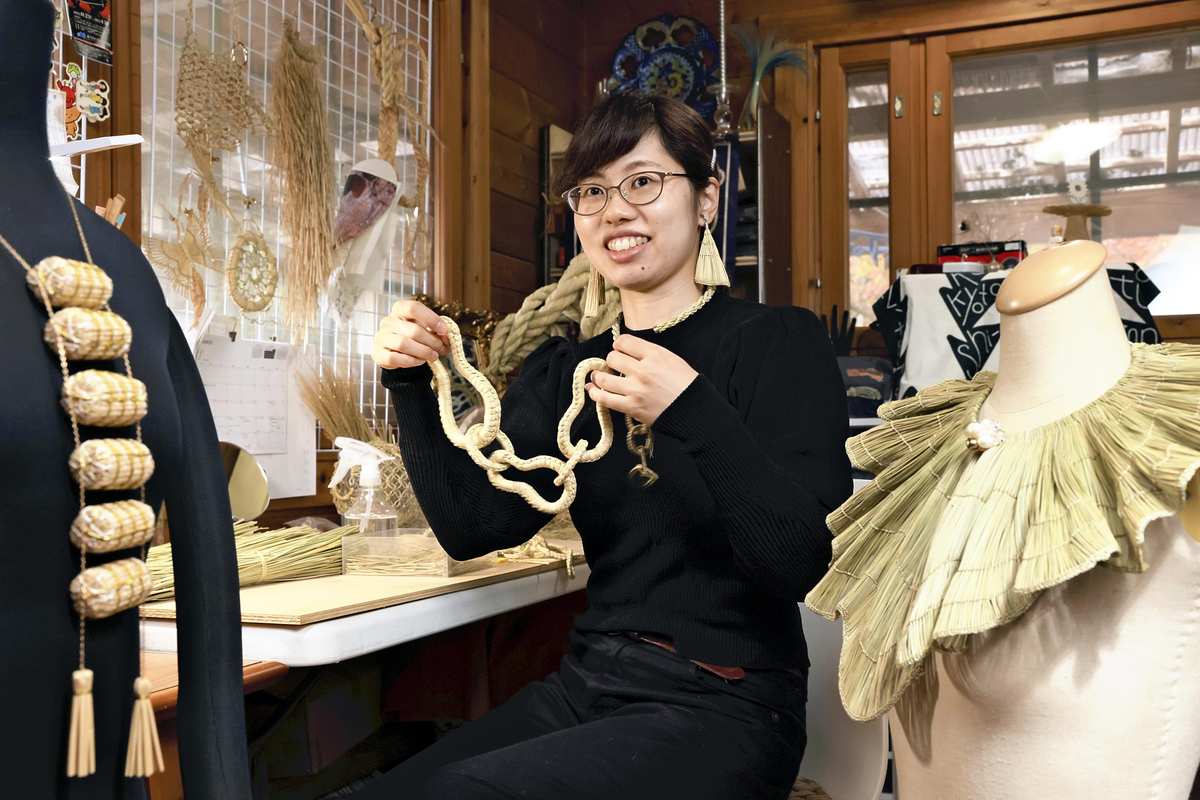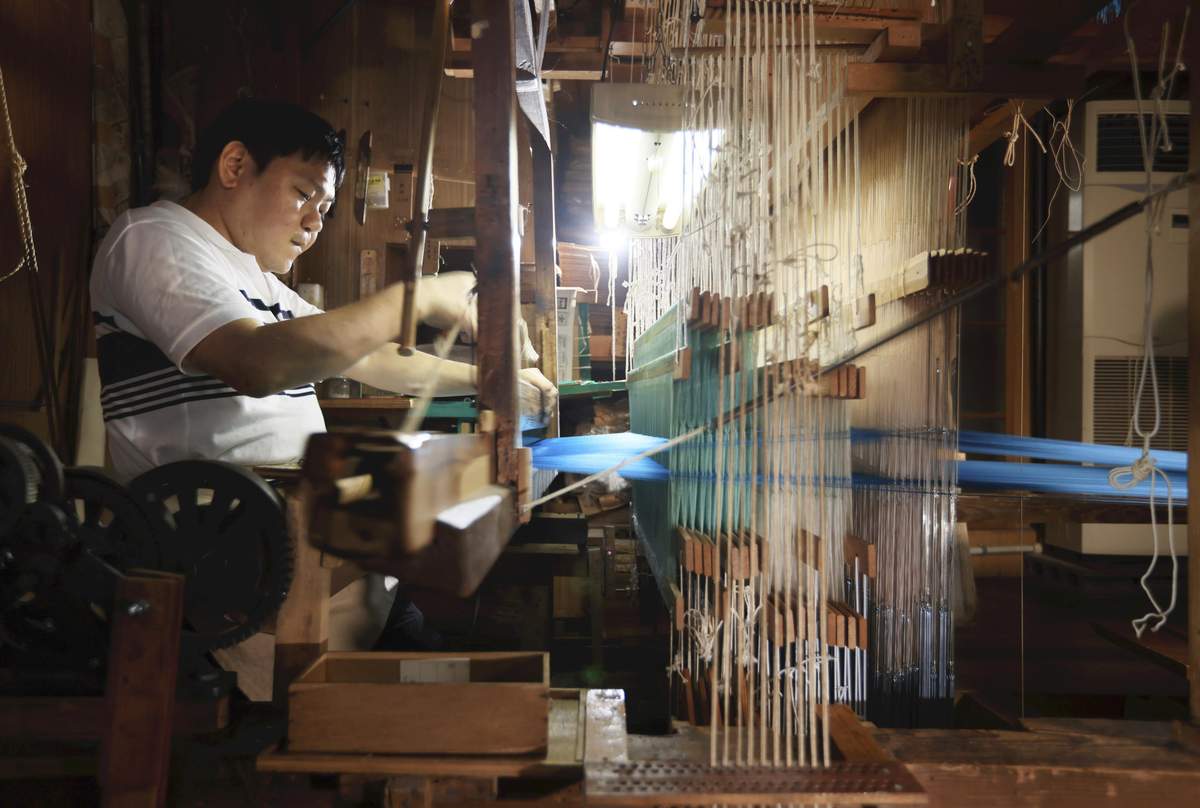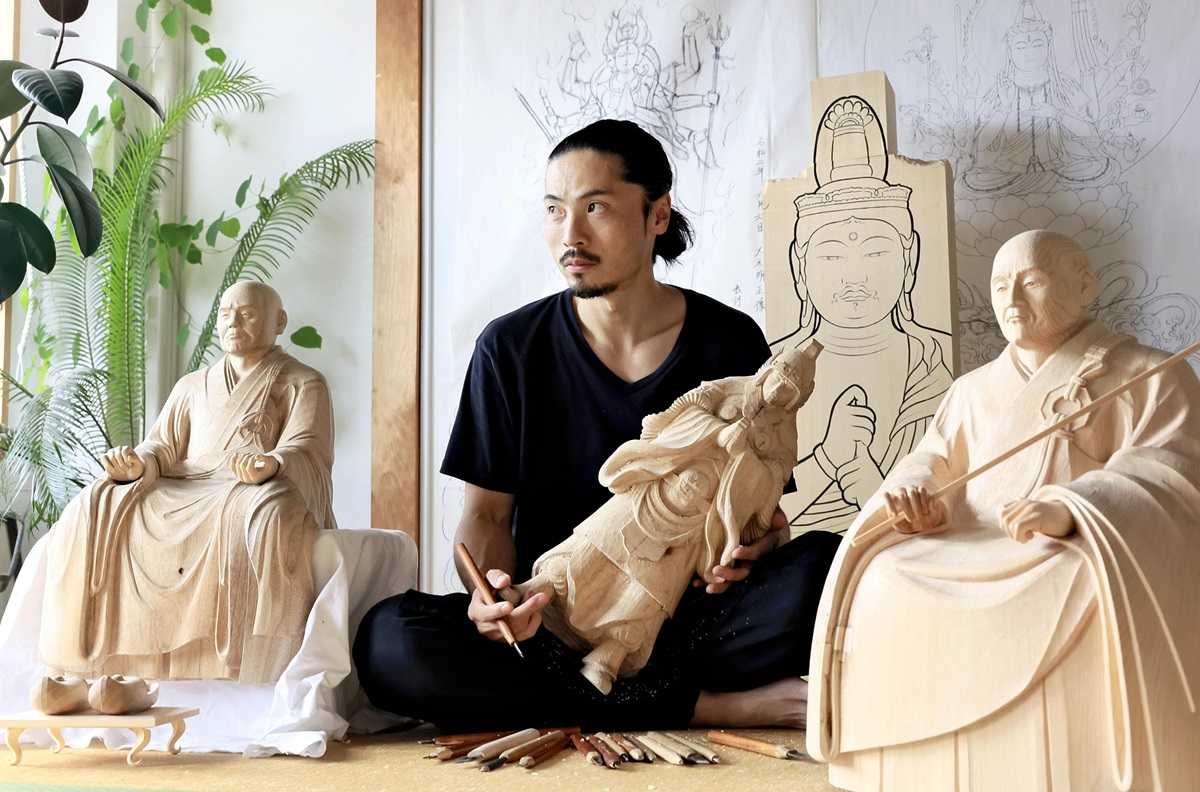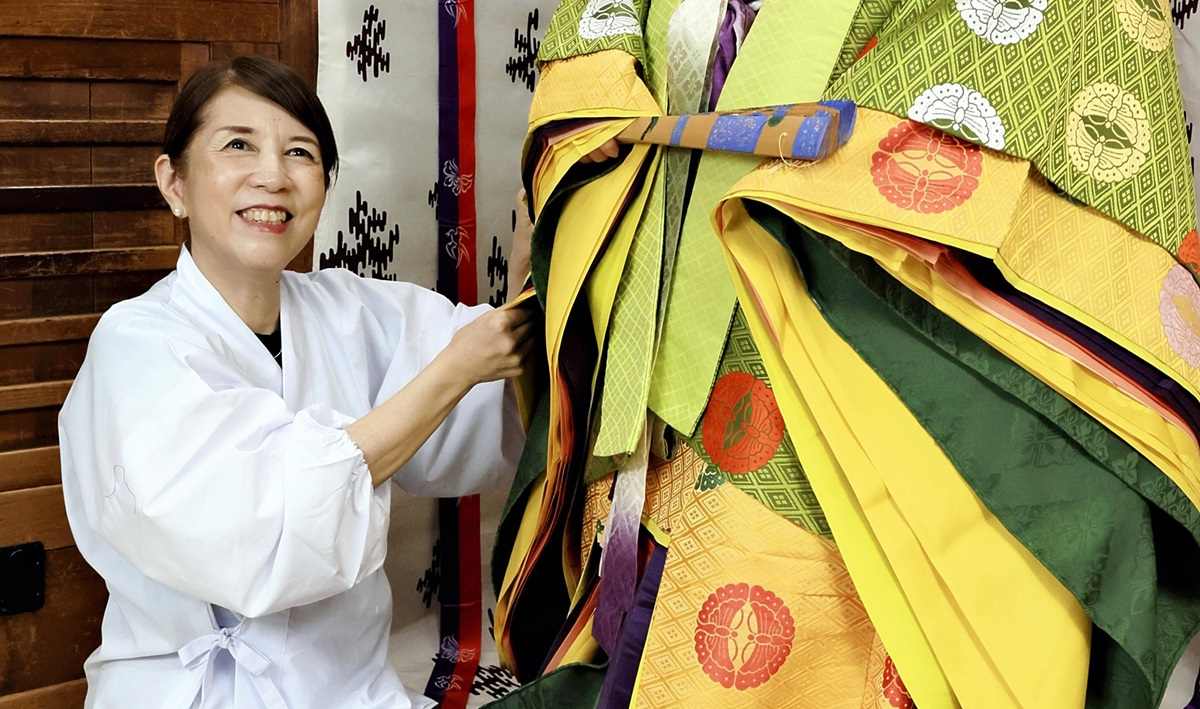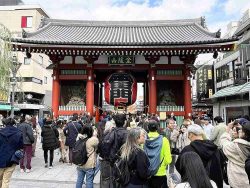Heirs to Kyoto Talent: Noh Masks Carver Gives Deep Expression to Face of Japanese Art Form
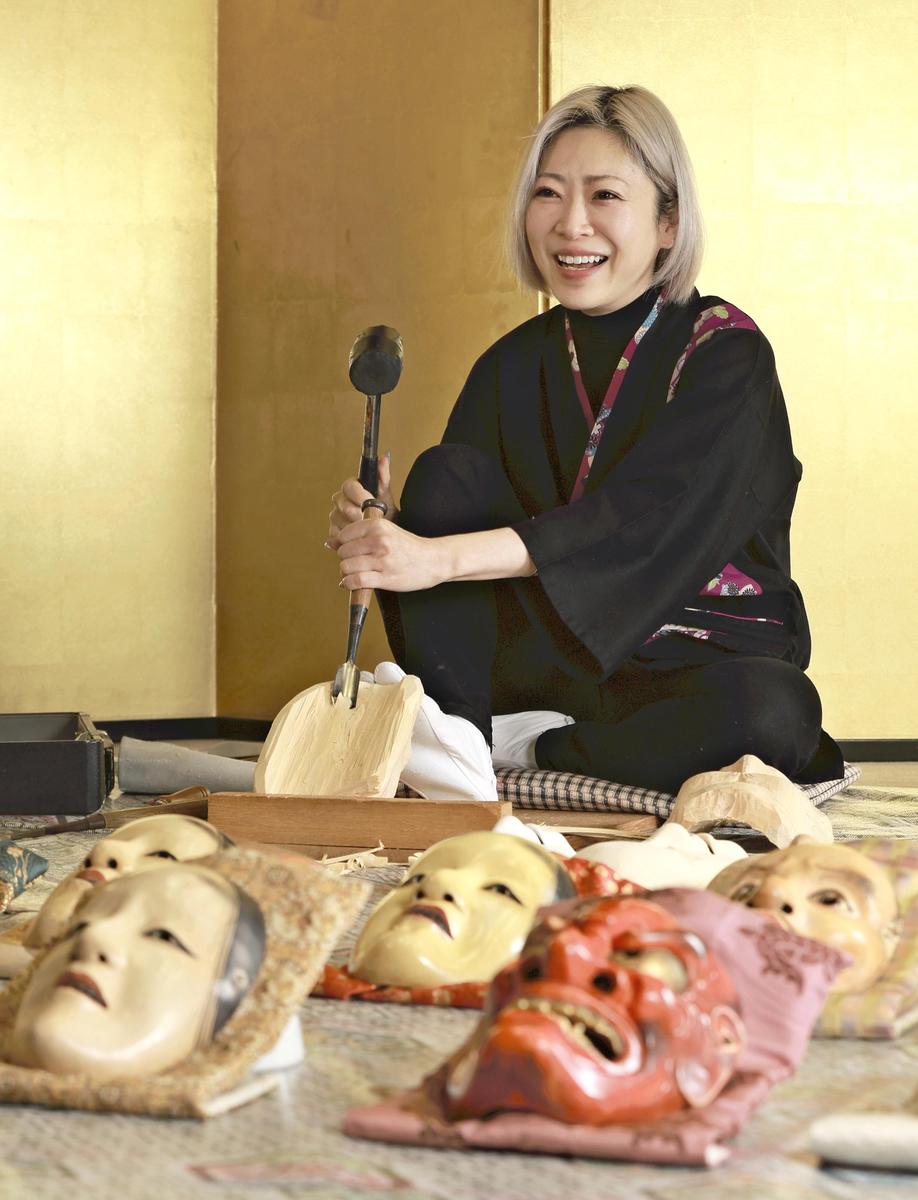
Noh mask carver Keiko Udaka talks about her work, with a hammer and a chisel in hand, at her workshop in Sakyo Ward, Kyoto.

10:18 JST, April 12, 2025
KYOTO — Noh mask carver Keiko Udaka is breathing new life into a block of wood from a 200-year-old Japanese cypress tree. In her quiet workshop in Sakyo Ward, Kyoto, which also functions as a noh training hall, Udaka works alone and intently, hammering a chisel against the block, with no drawing outline to guide her.
She reads the grain of the wood and trains her attention on what she feels through her hands. With each knock of the hammer, the wood more closely assumes the form of a human face.
Noh, a type of traditional Japanese theater, has been performed for 650 years, since the Muromachi period (1336-1573). Zeami, who perfected the art, taught that the most important element of noh is “yugen,” which means “subtle and profound beauty.”
The masks worn by performers represent characters, from young and old men and women, to fierce deities and demons. These masks are essential to bringing the audience into the world of yugen.
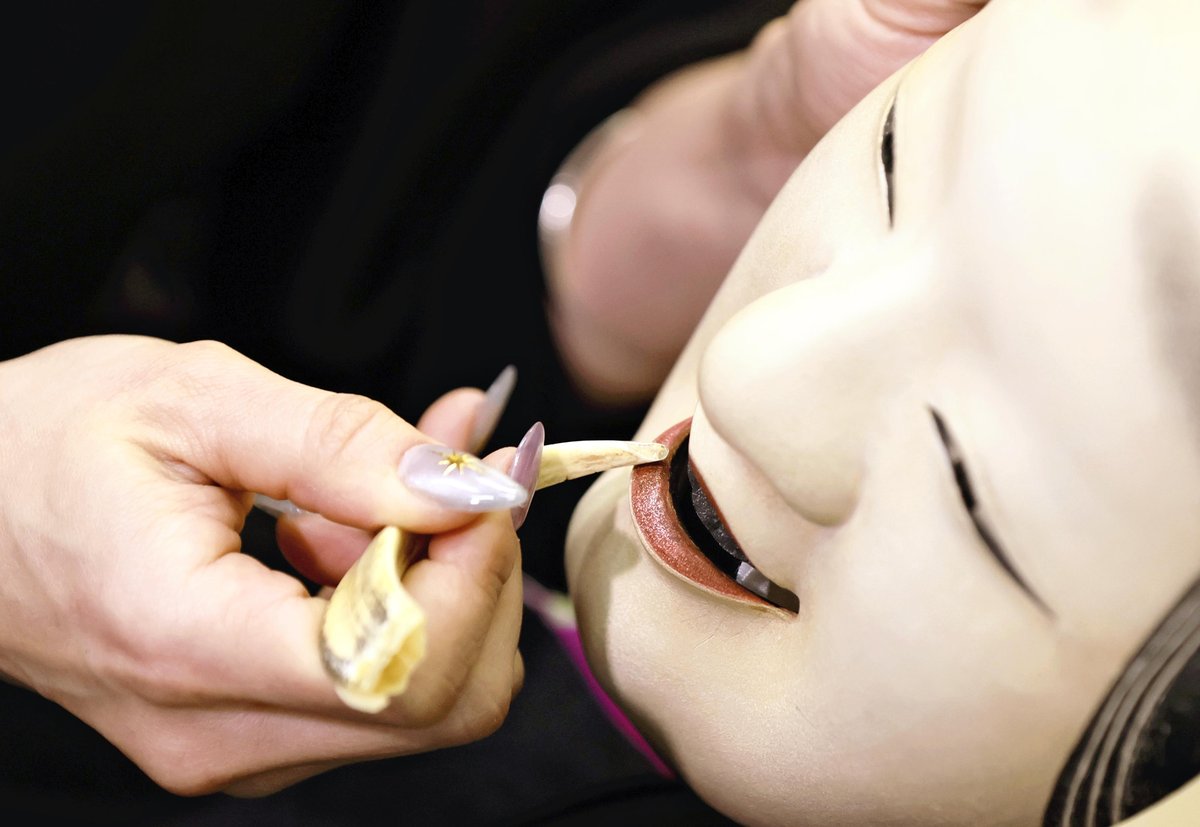
Udaka polishes a nearly finished noh mask with a boar’s tusk to provide a gloss.
While there are more than 200 types of noh masks, the oldest is considered to be the mask of an old man worn in “Okina.” The mask was taken from sarugaku, the forerunner to noh, during the Kamakura period (late 12th century to 1333).
Noh masks are usually carved based on photos or drawings of masks made in the past. Sometimes they are intentionally scratched or marred with insect damage to look as if they have been used for many years. These tricks make the finished product feel like a part of the long history of noh.
“It’s important how uncompromising and perfect you can be in carving the wood and coloring it,” said Udaka.
She still follows the teachings of her late father, Michishige, a master performer of the Kongo school of noh and a mask carver who died in 2020 at the age of 72.
Udaka sometimes carves for 15 hours or more at a time, night or day, forgetting to eat and sleep.
“When you look at a noh mask for a long time, you see an illusion that makes it look better than it really is. I’m always struggling to make my masks better than the images that have been enhanced in my mind’s eye,” she said.
A change of heart
Noh has been a part of Udaka’s life for as long as she can remember. She learned noh chanting and dancing, and also attended her father’s mask carving class. She performed on a noh stage with her two younger brothers.
In junior high school, she distanced herself from the art. “It’s my younger brothers who will take over our family business,” she thought.
In high school, she became an enthusiastic fan of flashy rock bands. She dyed her hair and pierced her ears. She felt the gap between her and her conservative father grow ever larger.
She went to art college, where she studied oil painting. Although she sometimes helped her father, she “never thought of pursuing painting or noh as a career,” she said.
The turning point came when she accompanied her father on a tour of Europe in 2007. Unlike many Japanese people, European people looked closely at the noh masks on display and praised their beauty. She was overwhelmed.
Although she was asked many questions, she was not able to answer them. She felt frustrated.
She realized that noh masks had the power to move people deeply. That was the moment that freed her from her beliefs that “noh is a family business for men” and “noh is old-fashioned.”
Once she was convinced, her motivation and enthusiasm were boundless. She read a lot on the history of noh masks and their various types, and asked her father about how to make them.

After finishing this shikami mask, Udaka felt confident she could carve noh masks professionally.
Twelve years ago, she received her first order. It was for a shikami mask, which is mainly used to play demonic spirits and bears an expression distorted with rage.
At this time, she was living an incomplete life — working part-time and carving noh masks — which made her feel uneasy about her future.
She finished the shikami mask without relying on her father at all. With her success, she grew confident that she could survive as a professional mask carver.
A ‘dictionary’ in wood
Udaka likens noh masks to a “thick dictionary” containing enormous amount of information and accumulated wisdom.
While someone who shows no emotion is often described as having a face “like a noh mask,” even masks that appear impassive have slight differences between their left and right cheeks and the left and right corners of their mouths. By tilting the mask, an actor can achieve a variety of nuanced emotions — joy, melancholy and more — depending on the angle. Reproducing the height of expression that master noh mask carvers in the past spent hundreds of years to create is an endless battle.
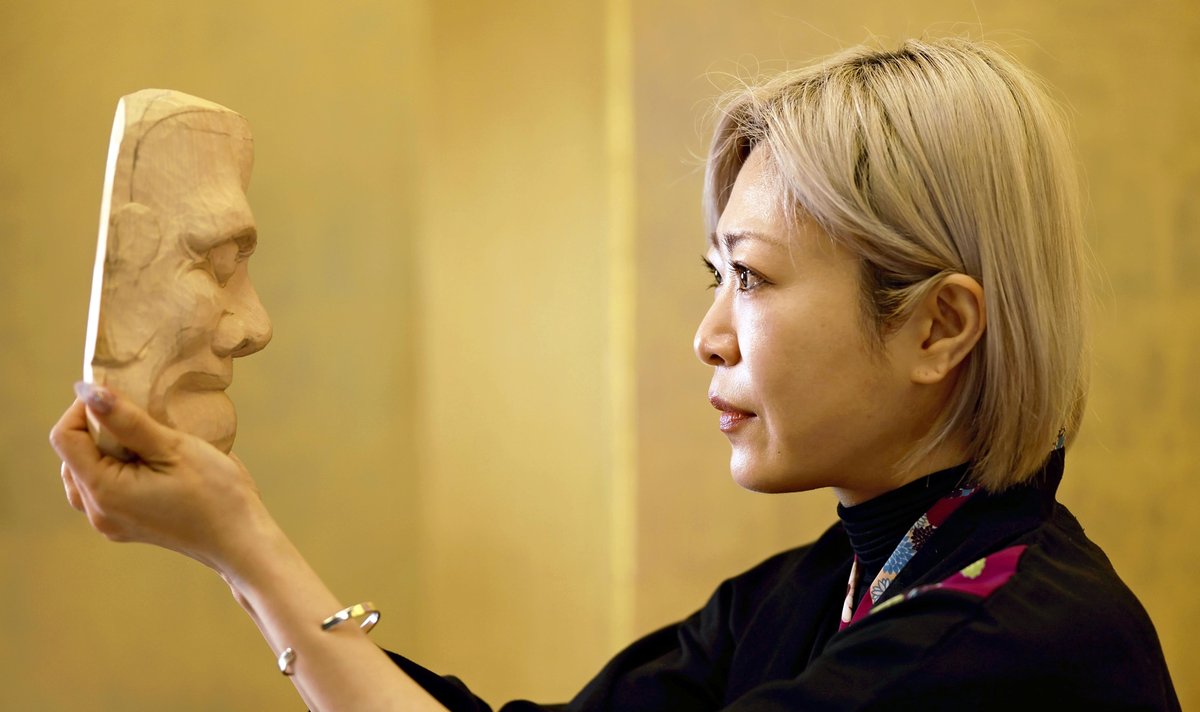
Udaka studies the expression of a noh mask she is working on, as she considers how to give it more nuance and depth.
“Part of the appeal of noh masks is that they are hard to understand and unattainable. I can learn something different from each mask,” Udaka said.
Today, few people are familiar with noh, and Udaka believes that because she was born into the world of noh but stepped out of it temporarily, there are things she can do to support the art.
She also works on joint projects with overseas brands and hosts noh mask-making classes in Kyoto and Tokyo, as she believes that she “mustn’t let people who understand the value of a noh mask become extinct.”
Noh plays do not have flashy stage settings or performances. The audience must use imagination to understand and enjoy the stories. And what inspires the audience’s imagination is the noh masks.
“I want to create masks that attract people, even if there’s no explanation about the work,” said Udaka.
***
If you are interested in the original Japanese version of this story, click here.

Heirs to Kyoto Talent: Maki-e Artisan Uses Brilliant Skill to Preserve Traditional Lacquerware Craft
Related Tags
"Features" POPULAR ARTICLE
-

Sanrio to Open Museum in Yamanashi Pref. Dedicated to Founder, Exhibits Include Hello Kitty, Other Characters
-
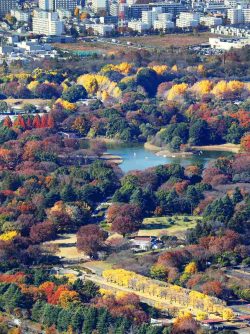
Autumn Foliage Surrounds Visitors to Tokyo’s Showa Kinen Park
-

My Daughter No Longer Speaks to Me, But I Want to See Her and My Grandchild
-

Kumamoto: Public Bath Refurbished as Library Where You Can Chat, Take Photos
-

Frozen Vegetables: Demand Rises for Convenient, Tasty Domestic Produce
JN ACCESS RANKING
-

Tokyo Economic Security Forum to Hold Inaugural Meeting Amid Tense Global Environment
-

Keidanren Chairman Yoshinobu Tsutsui Visits Kashiwazaki-Kariwa Nuclear Power Plant; Inspects New Emergency Safety System
-

Imports of Rare Earths from China Facing Delays, May Be Caused by Deterioration of Japan-China Relations
-

University of Tokyo Professor Discusses Japanese Economic Security in Interview Ahead of Forum
-

Japan Pulls out of Vietnam Nuclear Project, Complicating Hanoi’s Power Plans

